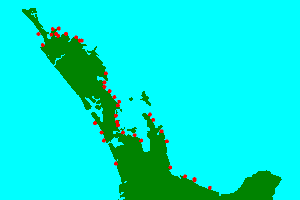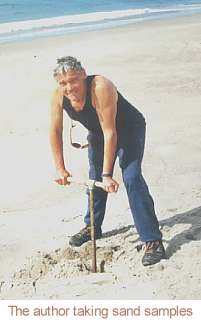 In
my search to answer the question why we are losing so much of our marine
environment, I noticed that we are also losing our beaches. Contrary to
engineers' reassurances that our beaches are "in a stable dynamic equilibrium",
I discovered that many are not. Here in New Zealand we are able to find
beaches in all states of health, mainly because this is still such a young
country with so few inhabitants, having been developed only a hundred years
ago. Elsewhere in the world, most beaches appear to have proceeded past
their 'point of no return', which has led scientists to believe that beach
erosion is an unavoidable world-wide problem.
In
my search to answer the question why we are losing so much of our marine
environment, I noticed that we are also losing our beaches. Contrary to
engineers' reassurances that our beaches are "in a stable dynamic equilibrium",
I discovered that many are not. Here in New Zealand we are able to find
beaches in all states of health, mainly because this is still such a young
country with so few inhabitants, having been developed only a hundred years
ago. Elsewhere in the world, most beaches appear to have proceeded past
their 'point of no return', which has led scientists to believe that beach
erosion is an unavoidable world-wide problem.
My search led me to many beaches in northern New Zealand (see map) and encouraged me to study the situation elsewhere in the world. Scientists and engineers world wide are treating the beach/dune system as a balance where sand is shifted between the various compartments. This method is not able to qualify whether a beach is healthy or not. A breakthrough came when I likened a beach to a living organism, a comparison justifiable by their similarities. A self repair mechanism is the most important mechanism in any living organism and also for the beach. If it is absent, the beach and dunes will die. If it is healthy, the beach and dunes react to changing circumstances in a way necessary to survive.
 My
findings are based on simple observations, backed by simple physics that
are valid all over the world. Instead of awaiting the result of decades
of measuring and monitoring, the health of a beach can now be assessed
in as little as a single visit. By understanding how the beach self repair
mechanism works, we can now understand why many human activities are so
disastrous for a beach's health. But do we have the strength to remove
coastal trees, bulldoze dunes and do things opposite to what was once thought
right? It sure is an enormous challenge for society. The good news is that
many beaches can still be saved, now that we know what damages them.
My
findings are based on simple observations, backed by simple physics that
are valid all over the world. Instead of awaiting the result of decades
of measuring and monitoring, the health of a beach can now be assessed
in as little as a single visit. By understanding how the beach self repair
mechanism works, we can now understand why many human activities are so
disastrous for a beach's health. But do we have the strength to remove
coastal trees, bulldoze dunes and do things opposite to what was once thought
right? It sure is an enormous challenge for society. The good news is that
many beaches can still be saved, now that we know what damages them.